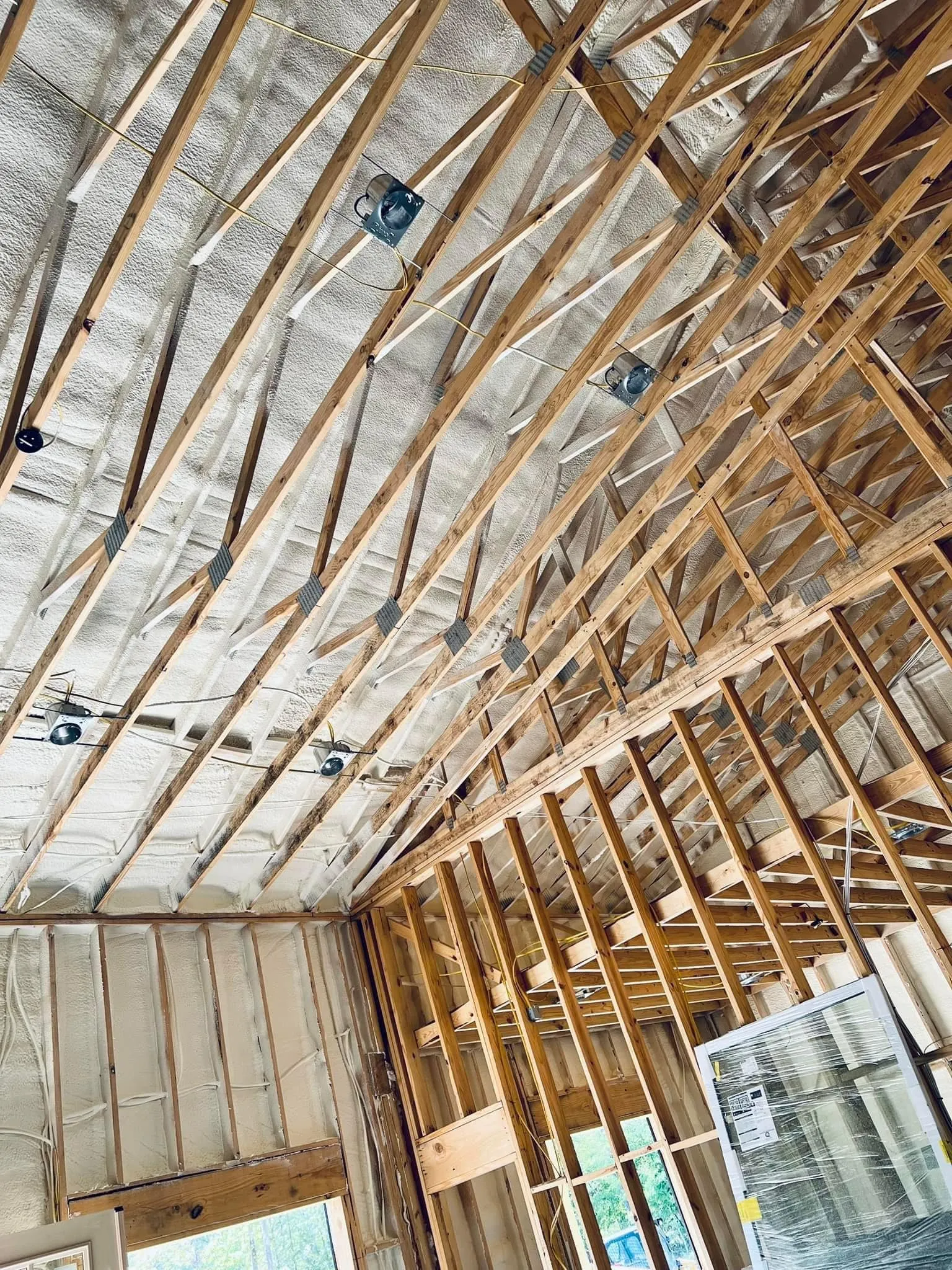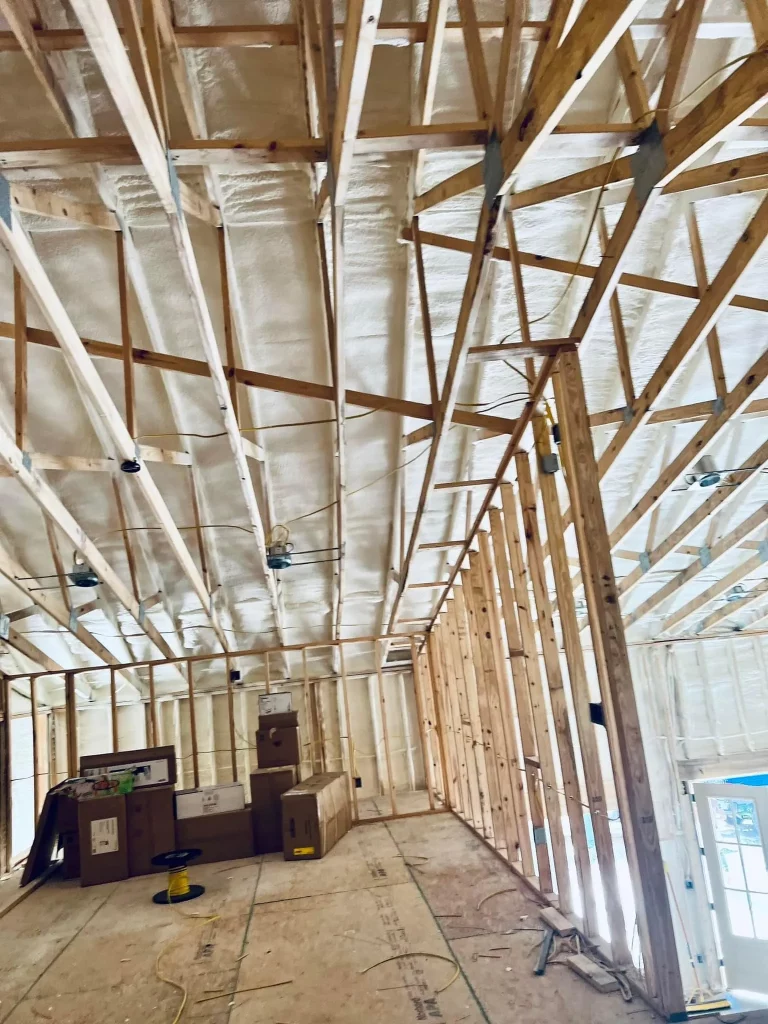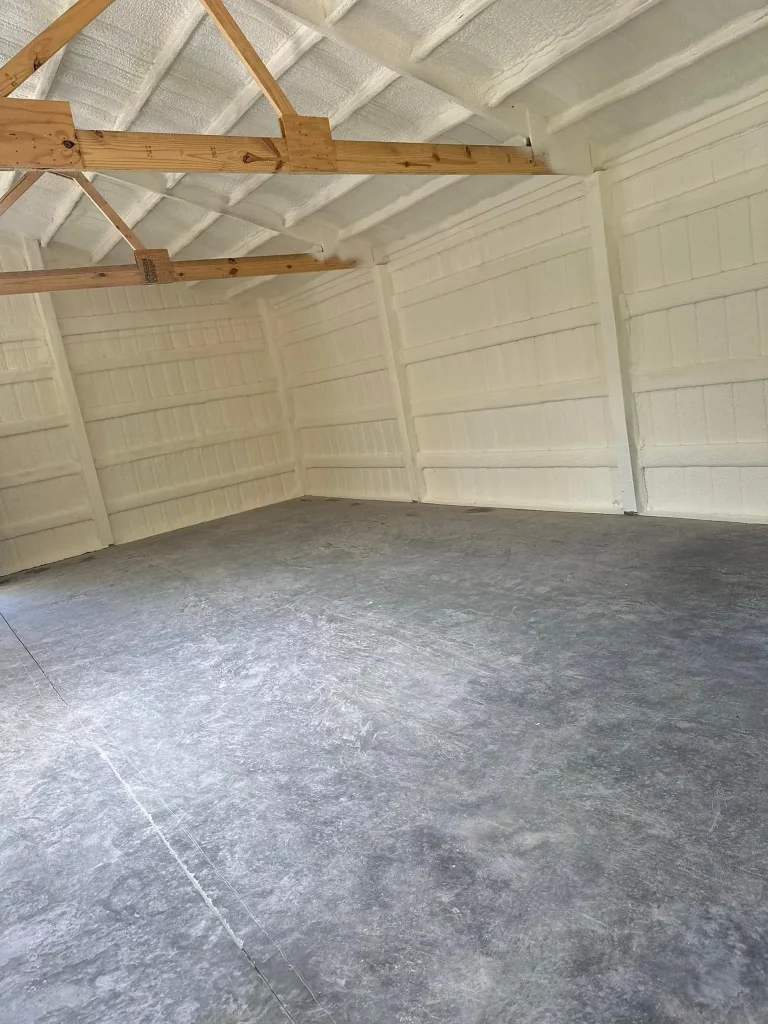
You step into your home on a chilly winter day, only to feel a draft sneaking through the walls. Or maybe summer heat turns your living room into a sauna despite the AC running nonstop. These moments highlight a basic truth: insulation plays a huge role in keeping your home comfortable year-round. Without proper insulation, your heating and cooling systems work overtime, driving up utility bills and making everyday life less enjoyable.
Insulation refers to materials installed in your home’s walls, attic, floors, and other areas to slow down heat flow. It acts as a barrier against unwanted temperature changes, helping maintain a steady indoor climate. Beyond comfort, good insulation cuts energy use, lowers costs, and even supports environmental efforts by reducing reliance on fossil fuels for heating and cooling. According to the U.S. Department of Energy, homes with effective insulation can save up to 15% on heating and cooling expenses.
Building on these basics, this guide covers everything you need to know about insulation, from the ground up. You’ll start with the fundamentals of how insulation works and why it counts. Then, explore different types of materials, along with their strengths and weaknesses. Next, dive into selecting the best option for your specific home, including installation steps and tools. You’ll also learn about tackling common issues, measuring savings, and looking ahead to new developments. By the end, you’ll have the knowledge to assess your home’s insulation, make smart upgrades, and enjoy a more efficient living space.
Drawing from years of hands-on work with insulation in various homes, this overview aims to equip you with practical advice. Whether you’re a new homeowner or planning renovations, understanding these details empowers you to make informed choices that pay off over time.
To grasp insulation’s role, consider how heat moves through your home. Heat travels in three main ways: conduction, where it passes directly through materials like walls; convection, through moving air; and radiation, as invisible waves. Insulation materials trap air pockets that resist all three, keeping heat where you want it.
A key measure is R-value, which rates how well a material blocks heat flow. Higher R-values mean better performance. For example, in colder climates, attics often need R-38 to R-60, while walls might aim for R-13 to R-21. The U.S. Department of Energy provides zone-specific recommendations to match your location.
Insulation also handles moisture and sound. Some types absorb water, leading to mold if not managed, while others create a vapor barrier. Noise reduction comes as a bonus, with denser materials muffling outside sounds.
Start by assessing your home’s current setup. Check for gaps in attics or exposed ducts. This baseline helps you plan improvements effectively.
Your home’s building envelope—the walls, roof, windows, and foundation—seals the interior from the outdoors. Insulation fills key spots within this envelope to prevent energy leaks. Poorly insulated envelopes can lose up to 25% of a home’s energy, per data from the Building Science Corporation.
Focus on high-impact areas like the attic, where heat rises, and rim joists in basements, which often go overlooked.
Key Takeaways:
Effective insulation does more than keep you warm or cool. It directly impacts your wallet and well-being. In 2022, U.S. households spent an average of $2,000 on energy bills, with heating and cooling accounting for nearly half, according to the U.S. Energy Information Administration. Upgrading insulation can trim that significantly.
Comfort stands out as a top benefit. Steady temperatures mean fewer hot or cold spots, so you avoid bundling up indoors or cranking the thermostat. This consistency also benefits health, especially for those with allergies, as better insulation reduces drafts that carry dust and pollen.
Building on these personal savings for your wallet and health, insulation extends to broader environmental advantages that connect individual actions to planetary health. Environmentally, insulation lowers your carbon footprint. By using less energy, you cut down on emissions from power plants. The Environmental Protection Agency notes that home efficiency measures like insulation prevent millions of tons of CO2 yearly.
Don’t overlook property value. Homes with strong energy features sell faster and for more, with buyers prioritizing low utility costs in today’s market.
Expert Tip: Walk through your home during extreme weather and note uncomfortable areas. These spots often reveal insulation gaps worth addressing first.

Homeowners face several insulation options, each suited to different needs and budgets. Batt insulation, like fiberglass, comes in rolls or panels for easy attic and wall installs. Blown-in types, such as cellulose, get puffed into cavities for hard-to-reach spots.
Rigid foam boards offer high R-value per inch, ideal for foundations. Spray foam expands to fill gaps, creating an airtight seal but at a higher cost.
To illustrate the differences among common types, here’s a comparison table:
| Type | R-Value per Inch | Pros | Cons | Best For |
|---|---|---|---|---|
| Fiberglass | 2.2-4.3 | Affordable, easy to find | Can irritate skin, settles | Walls, attics |
| Cellulose | 3.1-3.8 | Eco-friendly, soundproof | Absorbs moisture if wet | Attics, walls |
| Spray Foam | 3.6-7.0 | Airtight, high performance | Expensive, professional install | Basements, rim joists |
| Rigid Foam | 3.8-5.0 | Moisture resistant, slim | Higher upfront cost | Foundations, exteriors |
Data from the Oak Ridge National Laboratory supports these ranges, based on lab tests.
Choose based on your goals. For sustainability, recycled-content cellulose shines. For maximum efficiency, spray foam leads.
Expert Tip: If your home has irregular shapes, blown-in insulation adapts better than rigid batts, filling nooks without cutting.
Selecting insulation starts with your home’s details. Consider climate—colder areas need higher R-values. An older home might have settling insulation from the 1970s, requiring full replacement.
Budget plays a role. Basic fiberglass costs about $0.30 to $1.50 per square foot, while spray foam runs $1 to $3, per HomeAdvisor. Factor in long-term savings; better insulation pays back faster.
Assess space constraints. Thin foam boards fit tight areas where bulkier materials won’t. Also, check for fire ratings, especially in garages.
Conduct a simple audit: Feel for drafts, measure attic depth, and review past energy bills. Tools like infrared cameras reveal hidden leaks, available for rent at hardware stores.
For multi-story homes, prioritize the attic first—it offers the biggest bang for your buck.
The U.S. divides into zones from 1 (warm) to 7 (cold). Zone 5 homes, common in the Midwest, recommend R-49 attics. Use the U.S. Department of Energy’s zone map to pinpoint yours.
In humid areas, pick moisture-resistant types to avoid mold. Dry climates focus on heat reflection.
Installation varies by type and location. For DIY batts in accessible attics, wear protective gear—gloves, mask, goggles—and unroll between joists without compressing the material.
Blown-in requires a machine to force material through a hose. Rent one for $50-100 a day, or hire pros for precision.
Spray foam demands professionals due to chemicals; they use rigs to apply it evenly.
Steps for a basic wall install:
Hire experts for complex jobs like cathedral ceilings or crawlspaces to ensure safety and code compliance.
Expert Tip: Always leave a 3-inch gap around recessed lights to prevent overheating. Use rated covers if they’re insulation-contact type.
Common mistake: Overstuffing cavities, which cuts R-value. Aim for full but loose fill.
Over time, insulation faces wear. Settling in blown-in types like cellulose creates gaps, reducing effectiveness by 20%, notes the Insulation Institute. Solution: Top off annually with small amounts.
Moisture buildup in basements leads to damp cellulose. Install vapor barriers and dehumidifiers to combat this.
Pests like rodents chew through fiberglass, so use metal mesh in vulnerable spots.
For older homes, asbestos in pre-1980s insulation poses risks—test before disturbing.
Address drafts at windows with weatherstripping alongside main insulation upgrades.
Key Takeaways:
Expert Tip: In humid climates, pair insulation with proper ventilation fans in bathrooms and kitchens to control indoor moisture levels.
Insulation boosts efficiency by minimizing energy loss. A well-insulated home uses 10-20% less energy, saving $200-400 yearly on average, based on Energy Star estimates.
Calculate ROI: If an attic upgrade costs $1,500 and saves $300 annually, payback hits in five years. Use online calculators from utilities for personalized figures.
Combine with sealing air leaks for compounded effects—insulation alone won’t fix a leaky envelope.
Track progress with before-and-after utility bills. Many areas offer rebates; check Database of State Incentives for Renewables & Efficiency for local programs.
Here’s a simple savings table:
| Upgrade Area | Avg. Cost | Annual Savings | Payback Time |
|---|---|---|---|
| Attic | $1,200 | $300 | 4 years |
| Walls | $2,500 | $400 | 6 years |
| Basement | $800 | $150 | 5 years |
Data adapted from U.S. Department of Energy guidelines.
For existing homes, retrofits add insulation without full rebuilds. Blow new material over old in attics, or drill holes in walls for dense-pack cellulose.
In historic homes, match original aesthetics while meeting modern codes. Use removable panels for access.
Start small: Insulate the water heater blanket or ducts for quick wins.
Permits may apply for major work; local building departments guide requirements.
Expert Tip: When retrofitting walls, ensure even distribution to avoid cold bridges—metal studs that conduct heat.
Insulation evolves with smarter materials. Aerogels offer high R-value in thin layers, perfect for retrofits. Phase-change materials absorb and release heat to stabilize temperatures.
Sustainable options grow, like sheep’s wool or mushroom-based foams, which are renewable and non-toxic.
Smart sensors monitor performance in real-time, alerting to issues via apps.
The market for advanced insulation hits $10 billion by 2025, driven by green building demands, per Grand View Research.
Stay informed through industry updates to future-proof your home.
You’ve now explored insulation from basics to advanced tips. Key points include understanding R-values, picking materials that fit your home, and addressing problems early for lasting results. These steps lead to lower bills, better comfort, and a greener footprint.
Use this guide as your reference: Audit your home, prioritize upgrades, and track savings. Small changes build to big improvements over time. You’re now ready to take control of your home’s efficiency.
For personalized advice on assessing or installing insulation, contact LMC Insulation. Teams at LMC Insulation have helped countless homeowners optimize their setups. Reach out via email at [email protected] or call (479) 351-6175 to discuss your project. Professional input ensures you get the best results without guesswork.

R-value depends on your climate zone. In southern states, R-30 to R-49 works for most attics. Northern areas often require R-49 to R-60. Check the U.S. Department of Energy for exact recommendations based on your ZIP code.
Yes, for simple jobs like attics with batts. Rent tools and follow safety steps. For spray foam or walls, hire professionals to avoid health risks and ensure even coverage.
Most types last 20-50 years with proper care. Fiberglass can settle over time, while foam boards endure longer if kept dry. Regular inspections extend lifespan.
It does, especially denser options like cellulose or foam. They absorb sound waves, reducing noise from traffic or neighbors by 20-50%, depending on thickness.
Often yes, for its airtight seal and high efficiency. It saves more energy long-term, but weigh against your budget—expect 20-30% better performance than fiberglass.
Look for uneven temperatures, high bills, or drafts. An energy audit with a blower door test confirms needs. Ice dams on roofs signal attic issues.